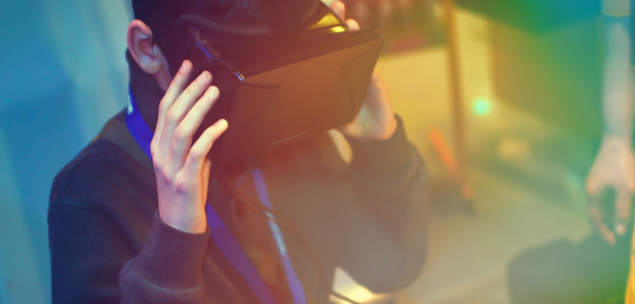Each year, some of the best “thinkers, makers, and doers” converge at Pause Fest to share new ideas across industries spanning creative, tech, and business. This year’s theme, Different Perspectives, explored diverse experiences of being human in an increasingly digital world.
Erminio Putignano, from brand consultancy PUSH Collective, gave a keynote opening by reminding us that, above everything, brands are stories, ones shaped by our belief of the world and encompassing our opinions, fears, and aspirations. It’s hardwired in us to find stories far more compelling than facts alone, so it follows that the greatest brands are those capable of weaving the most passionate and coherent narrative for people to be swept up in. And as the world around us evolves, so too do brands’ stories need to evolve.
How then might these stories be affected when marketing’s blue-sky optimism has been marred by a decidedly gloomy outlook? The news has grown particularly grim, with rising nationalist movements sprouting up across the world, state-funded cyber criminals tampering with our democratic elections, and the average YouTube comment section managing new levels of hostility. Technology has certainly had its hand in getting us into our current predicament, so what might be the opportunities for it to get us out?
Virtual reality (VR) was the darling of the conference this year and for good reason. It’s the latest evolution of a journey we’ve been on since we first started scrawling pictures on cave walls thousands of years ago – fulfilling our desire to craft narratives of worlds so vivid we might find ourselves transported to them. This technology’s real point of distinction is its ability to instil a sense of ‘alterity’ in users – the ability to see from another’s perspective. Now, even brands in otherwise ‘traditional’ industries have begun to create experiences that take full advantage of that opportunity.
Both The Guardian and the New York Times have had success with apps that use VR to put readers at the centre of their stories, be it a prisoner in solitary confinement, or a journalist on the frontlines in Falluja. Clouds Over Sidra, the first UN-funded VR film, follows a child through a day in a Jordanian refugee camp. After UNICEF adopted it as part of their street fundraising campaigns, they reportedly doubled the number of conversations that led to monetary contributions. The technology has created tremendous opportunities for brands who rely on empathetic narratives to captivate their customers, an area that is becoming increasingly difficult. They now operate in an environment where even simple messages seeking to foster unity have become battlegrounds. Could campaigns like Airbnb’s #weaccept be more impactful if we actually experience the importance of diversity?
Other speakers warned us to be cautious when considering our virtual future. Monika Bielskyte, digital creative and strategy advisor, proposed that technology would soon advance to the point that our ‘reality’ would simply be the level of transparency we choose. It raises an interesting question for brands – when every aspect of the physical world can potentially be modified, where is the threshold for appropriate exposure? It’s not difficult to imagine a world where brands might plaster themselves over every piece of empty visual space. So is there a responsibility to limit how much an individual’s private life might be consumed by that marketing?
In the end, I found the closest answer to this came from some of the youngest patrons of Pause Fest. As part of a project with Clemenger BBDO, three groups of RMIT students pitched ideas to their client, Myer, on how technology might be used to improve the department store’s value proposition. The most ambitious one imagined a somewhat Jetson-esque service that could use Google’s advanced analytics system to decipher the mood and feel of an uploaded family photo.
It then connected that information to scents in the natural world (think liquorice for shoe polish, fresh-cut grass for springtime, and even sea salt for tears) and distilled it into a bottled scent smelling like the memory, which could be collected in-store.
I think inside that proposal lay a great lesson for us all. As we become more connected, brands are starting to feel like a gas – expanding to occupy all the space, both physical and virtual, available in our lives. But in an age of unprecedented technological wonder, we shouldn’t just be using those resources to sell the same stuff, better. In portraying an idea absent of data mining or social media integration, the students reminded me of a worldview often forgotten; one where technology is deployed not to monitor, but to surprise, enthral, and delight us. In a world of post-truths, fake news, and political blues, isn’t that what we need right now?
About the author
Eugene Healey is a brand analyst for PUSH Collective, an independent strategy and creative agency based in Melbourne. Eugene’s experience stretches across education, healthcare and superannuation industries, where he has developed brand strategies, coordinated market research, and conducted in-depth competitor reviews and analyses. Eugene graduated with a Masters in Commerce as valedictorian from the University of Melbourne, where he also taught Marketing in a past life.

